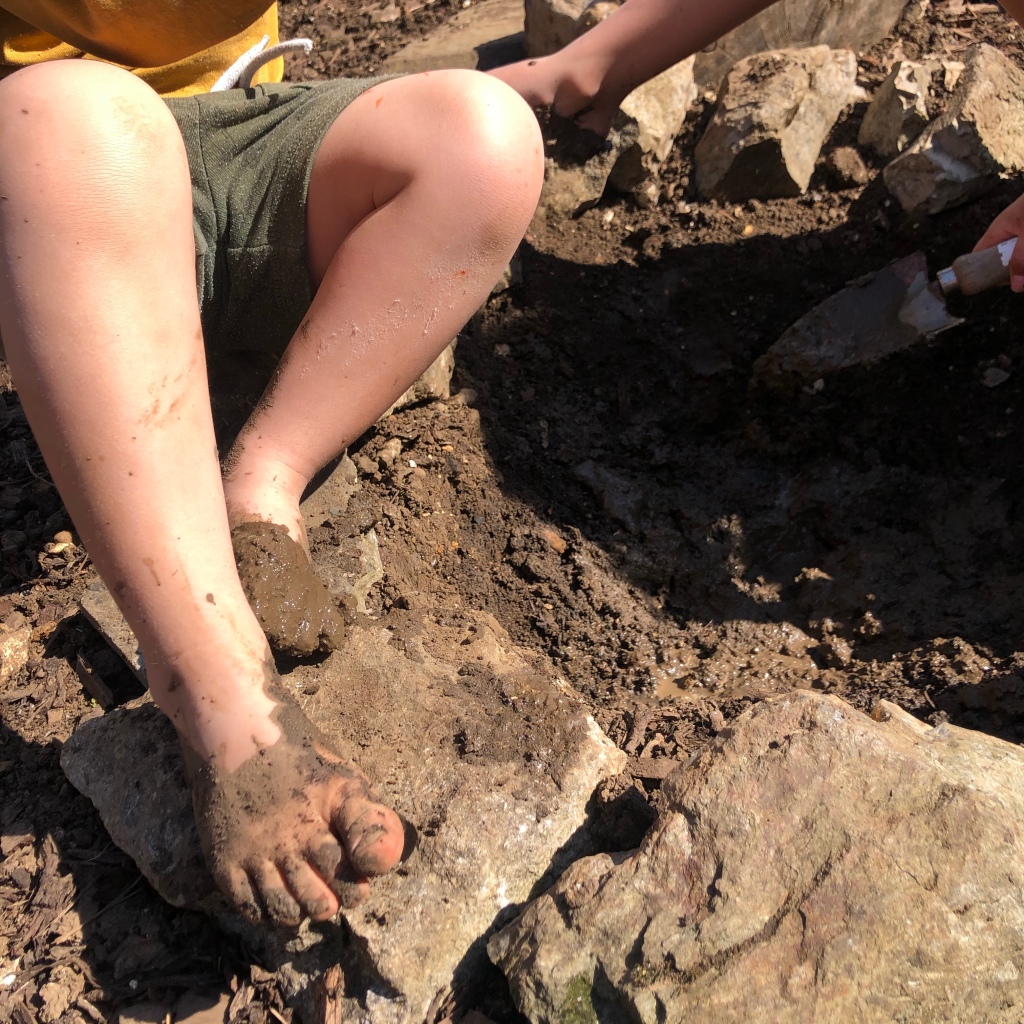Mud mud glorious Mud!

Who doesn’t love Mud! I defy you to not conjure up a fond outdoor play childhood memory of at least one moment that didn’t involve squelching in mud – it was awesome, right!?
At Kinder Harmony
We’ve been digging in the same spot for just over 4 days now. The children have enjoyed using lots of different tools to make a dent in the earth; its been super hot here so the earth is hard but this has led them to now discover (through investigation) that if they add water to their digging spot they can make steady progress, needless to say, today has been a very..VERY messy affair!
The Big Dig activity:
Find a spot in the garden that your children can use to create their very own Big dig project. Mark it out with some other natural materials, logs, stones, rocks etc. These markers will create a boundary to restrict your children unearthing the entire garden and also double up as great places for the bugs you unearth to hide or make a home. Set expectations and explain to your children their boundaries from the very start.
Remember: digging the earth is not entirely sustainable so it’s important that we restrict the area we are using for our project to limit our negative impact on our ecosystems within the garden.
This activity is all about investigative play through discovering the wonders of the earth…
Below, I have shared some “Big Dig Top tips” to make your experience as play based yet educational as possible, whilst all the while encouraging the opportunity to be child-led and adaptable for mixed ages.

1) Use a variety of tools, kitchen untensils work well, trawls or why not use your hands as tools.
Please, Please note: always give a safety briefing to your children before they begin to dig with tools; be sure they are looking out for any fingers and toes when they are digging in the earth to avoid accidents.
2) Record data in a graph – by hand or on the computer.
3) Categorise your finds by shape, colour size or other. Why not keep your favourite finds in a tin as a special momento of your big dig project, a lovely collection for any child to treasure.
4) Make an inventory of what you have found.

5) Add magnifying glasses or glass jars/ tubs and tins with air holes to take a closer look at any mini beast finds. Can you name them? How many of each species?
6) Add containers for your children to fill with soil so they can transport them or perhaps use plant pots, to then plant seeds in them. Clearly state the mud free zone to your children so they know where they can transport their mud to. Please don’t scold them for getting it wrong, simply remind them where their boundaries are, praise them for adhering to the rules and boost their self esteem.
You only live once…
7) why not give all of your feet a mud mask (parents included) and help each other pamper and then rinse your feet, cue the silky smooth skin – every cloud!
And lastly, the big one…
8) Add water To explore how materials transform.
I wonder how what’ll you’ll find, how messy you’ll get and how long your dig will last…
Once your big dig is finished why not plant a wildlife friendly perennial and enjoy giving back to the earth after all your messy fun.
For more learning through play ideas inspired by nature – come find us and follow on Kinder Harmony


Leave a comment